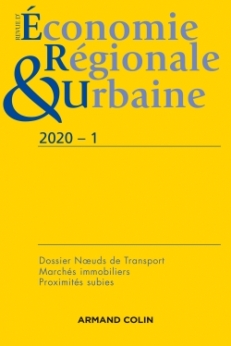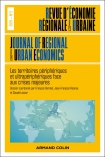
Revue d'économie régionale et urbaine (1/2020)
Pour acheter ce numéro, contactez-nous
Recevez les numéros de l'année en cours et accédez à l'intégralité des articles en ligne.
Les TGV desservent les villes dans leur gare centrale, et parfois périphérique. À partir de deux enquêtes réalisées dans une ville intermédiaire (Reims), nous analysons la localisation des entreprises autour de chacune des gares et leur usage du TGV. Dans les deux cas, une offre d’immobilier de bureau est centrale, mais les autres facteurs de localisation (notamment le TGV) et le type d’entreprises divergent. Si dans les deux cas, les entreprises y sont en majorité locales, la gare centrale accueille davantage de créations exogènes et la gare périphérique, des délocalisations exogènes. Les secteurs d’activité diffèrent, avec en gare centrale du tertiaire supérieur et en gare périphérique des activités administratives d’industries. L’usage du TGV est plus important pour les entreprises de la gare centre, pour motif de déplacement au siège. Près de la gare périphérique, cet usage est moindre, pour des motifs différents et par des catégories différentes d’employés.
High-speed rail (HSR) serve cities via city-centre stations and sometimes via peripheral stations. We analyse the case of Reims which is an intermediate city located 150 km to the east of Paris and served in two stations (a central and a peripheral one) in 2007 by the East European High-Speed Line. This case allows us to avoid bias linked to the comparison of different cities. By two surveys conducted respectively in 2014 and in 2015 in the same city, we identify the location of firms around each type of station and their use of HSR and the reasons why they have chosen this location. While local companies are present in both cases, we find more external creations around the central station and more external relocations around the peripheral station. Companies also differ in terms of activities. Around the central station, high-level tertiary activities are more important, while in the peripheral station there is a strong specialization in offices for industry-related activities. We also show that office availability is an important location factor in both types of area, but other location factors including HSR are type-specific. For instance, the role of HSR is different in each area. Around the central station, it is rarely cited as the number-one location factor and can be considered as an additional factor, while it is almost always reported as the primary location factor around the peripheral station. Moreover, the use of HSR is more important for the firms located around the central station especially for the direction of multi-sites firms. They use it to go to the Parisian head office. Around the peripheral station, the HSR is less used. Different type of employees use it and for different reasons (visiting the suppliers, professional training in Paris, or Parisian business events).
